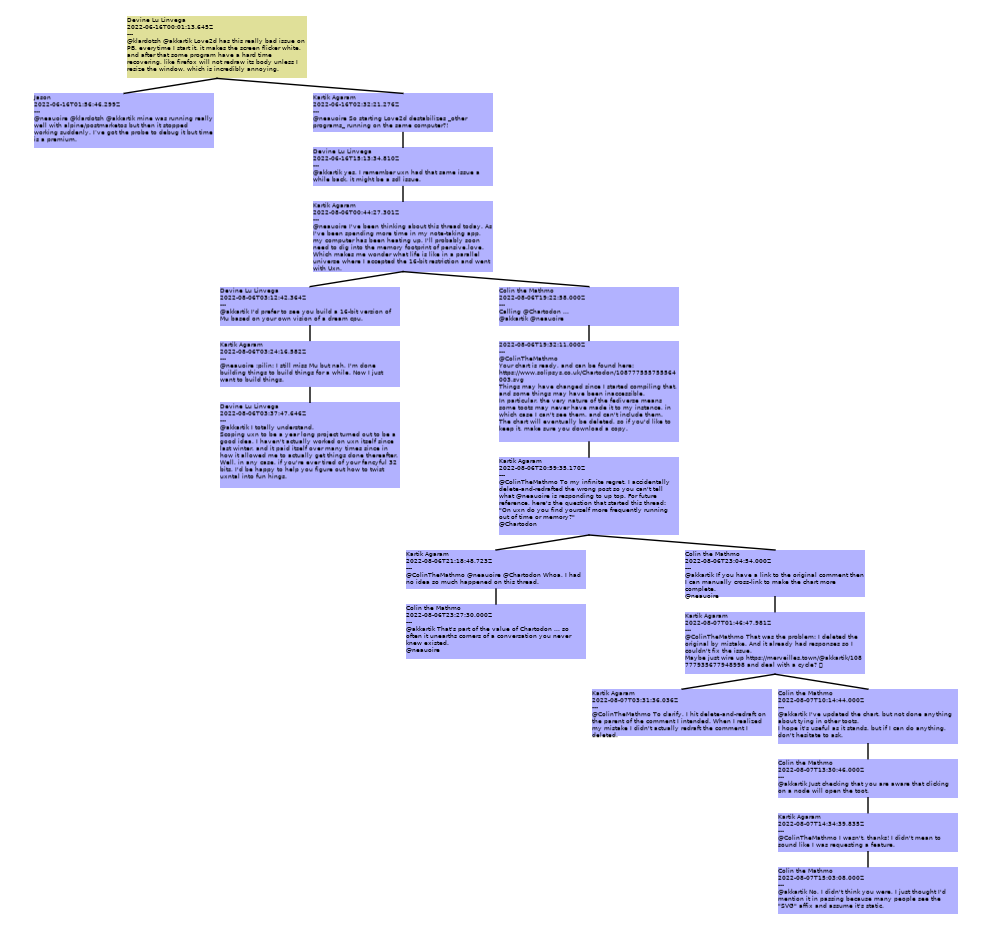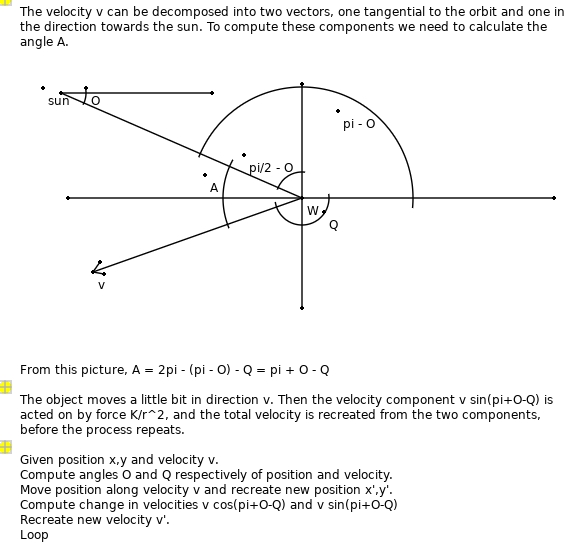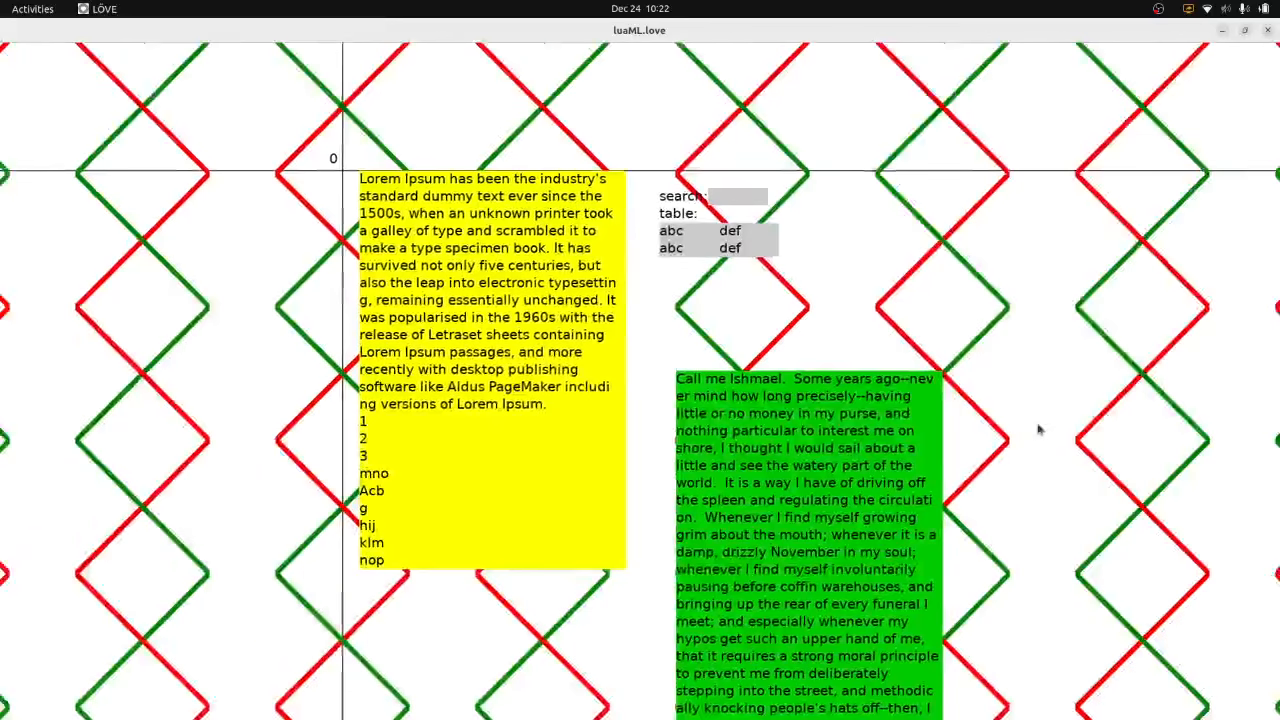An incomplete flashcard app for testing spelling. We thought the kids might need it but quickly invalidated that hypothesis. Still useful as a simple Freewheeling App that shows off LÖVE's audio recording and playback capabilities.

An incomplete flashcard app for testing spelling. We thought the kids might need it but quickly invalidated that hypothesis. Still useful as a simple Freewheeling App that shows off LÖVE's audio recording and playback capabilities.

A graphical thread visualizer for Mastodon with panning, zooming and keyboard shortcuts for structured parent/child/sibling navigation. Click on a message to copy its link to the clipboard so you can paste it into the browser.

A toy interpreter for Brainf**k after reading this post by Laurie Tratt.
Over the course of 2022, I've found myself gradually programming in a certain way that has been working really well. Here, let me show you a few examples, see if you can spot the pattern:

Minimal dependencies, easy to build, runs anywhere you can install apps without asking permission, thoroughly tested, designed above all to reward curiosity about its internals.
LuaML is a simple hierarchical box model for drawing shapes and text within rows and columns. Unlike HTML it has no syntax of its own; pages are just Lua literals. The core renderer generating shapes to draw is 50 lines of code.

As part of the Handmade Network wheel reinvention jam, I built an experimental UI for streamlining debug by print and allowing debug "prints" to include graphics.
pensieve.love is the graph-based note-taking UI I've wanted for some time for my 10+ years of notes spanning 500+MB of text. A fork of lines.love. Still in progress.
I've been working on lines.love, an editor for plain text where you can also seamlessly insert line drawings.

At FOSDEM 2022 I presented Teliva, a platform for habitable and auditable text-mode apps.
Some short demos about it: